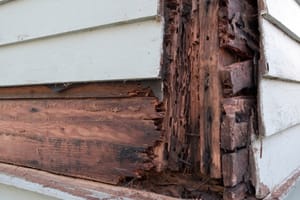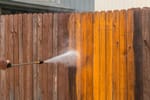Having a fence around your property not only adds to its aesthetic appeal but also enhances security and privacy.
Over time, however, fences naturally wear and require repairs to maintain their functionality and appearance.
Understanding the key cost factors involved in fence repairs can ease the process and help you manage your budget effectively.
Continue reading to discover the eight crucial factors that can influence the cost of repairing your fence.
1)) Type Of Material
The material of your fence plays a significant role in determining the cost of repairs.
For example, wooden fences may require more frequent repairs compared to vinyl or metal fences.
The cost of materials for wooden fences can vary depending on the type of wood used, while vinyl and metal fences may have higher upfront costs but lower maintenance expenses in the long run.
2)) Fence Height And Length
The size of your fence will directly impact the cost of repairs. Taller or longer fences will require more materials and labor to repair, thus increasing the overall cost.
Additionally, taller fences may require specialized equipment or permits for repairs, adding to the expenses.
3)) Age And Condition
Older fences are more prone to wear and tear, requiring more extensive repairs compared to newer ones.
If your fence is showing signs of rotting, warping, or rusting, it may need to be replaced entirely instead of just repaired.
Regular maintenance can help prolong the lifespan of your fence and reduce repair costs in the long term.
4)) Labor Costs
The cost of labor for fence repairs can vary depending on the complexity of the job and location.
Hiring professional contractors with experience in fence repair may come at a higher price but ensures quality workmanship and timely completion.
It's essential to get multiple quotes from different contractors to compare prices and services before making a decision.
5)) Permits And Regulations
Some areas may require permits for certain types of fence repairs or replacements, which can add to the overall cost.
It's important to check with your local authorities regarding any regulations or restrictions before starting any repair work on your fence.
6)) Accessibility
The accessibility of your fence can also impact repair costs. Fences located in hard-to-reach areas or close to obstacles like trees or buildings may require additional time and effort for repairs, resulting in higher expenses.
7)) Additional Features
If your fence has additional features such as gates, decorative elements, or security systems that need repair, it can increase the overall cost significantly.
It's essential to factor in these additional features when budgeting for fence repairs.
8)) DIY vs Professional Repairs
While some minor repairs can be done as DIY projects to save money, complex issues or structural damage should be handled by professional contractors.
Attempting major repairs without proper knowledge or tools can lead to further damage and higher costs in the long run.
Conclusion
Being aware of the key factors that influence the cost of fence repairs can empower you to make informed decisions and ensure efficient budgeting.
By considering the type of material, the height and length of your fence, its age and condition, labor costs, necessary permits and regulations, accessibility challenges, and any additional features, you can better prepare for potential expenses.
Furthermore, weighing the pros and cons of DIY versus professional repairs allows you to address issues appropriately without incurring unnecessary costs.
Keeping these factors in mind will not only help maintain your fence’s aesthetic appeal and functionality but also enhance the overall value and security of your property.
Download Our Free E-book!







